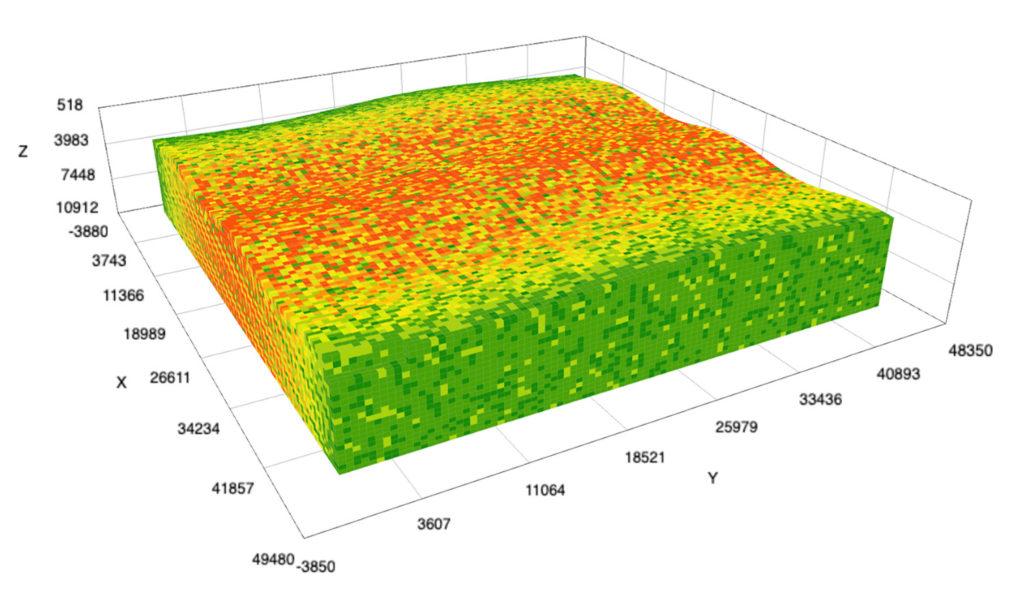The GeoToolkit.JS 2023 release innovation includes TypeScript migration, React Native support for mobile devices, improved composite schematics widget, added horizontal mode for MultiWellWidget, and more.
Houston, TX — July 19, 20223 — Today, INT proudly announces the release of GeoToolkit.JS 2023, the most advanced version of the company’s comprehensive set of high-performance tools and libraries for visualization of upstream data. GeoToolkit.JS 2023 comes with a wide range of exciting features and enhancements designed to revolutionize the user experience and empower developers to create exceptional applications.
The GeoToolkit.JS 2023 release introduces several notable highlights:
- TypeScript Migration and Public API Review: We migrated the entire GeoToolkit.JS library to TypeScript, resulting in improved code maintainability and enhanced developer productivity. Additionally, the Public API has undergone a comprehensive review, ensuring a more intuitive and streamlined development process.
- Seismic 2D Wiggle Anti-Aliasing: With our new anti-aliasing feature, based on Xiaolin Wu, seismic 2D wiggle displays are now visually smoother and more accurate, enabling geoscientists to analyze seismic data with unprecedented clarity.
- High-Level ChartWidget Class: GeoToolkit.JS 2023 introduces the ChartWidget class, simplifying the creation and customization of charts. This high-level abstraction allows developers to effortlessly integrate interactive charts into their applications, providing rich visualizations to end-users to support multiples series, union/stacked model space, and more.
- React Native Support for Mobile Development: We understand the importance of mobile application development, and with this release, we are excited to offer React Native support. Developers can now leverage the power of GeoToolkit.JS to build geoscience applications for both iOS and Android platforms, reaching a wider audience.
- Well Log Correlation Display Optimization: Our optimization efforts have resulted in lightning-fast performance when displaying over 10,000+ wells. Users can now visualize and analyze vast amounts of well log data within seconds, facilitating faster decision-making and improving productivity. Additionally, we have introduced a new feature called horizontal mode for MultiWellWidget. With this new mode, users can view and interact with the well log data in a horizontal layout, providing a different perspective and enabling more efficient analysis. Whether users prefer the traditional vertical view or the new horizontal mode, our optimized display and performance ensure a seamless experience even with large datasets.
These highlights are just a glimpse of what GeoToolkit.JS 2023 has to offer. Our commitment to continuous innovation and user-centric development ensures that the latest release meets the evolving needs of the geoscience community.
“For this release, it was important for us to incorporate features that would make our users’ lives easier and improve the level of applications — both web and mobile — that they can create with GeoToolkit,” said Dr. Dmitriy Lukyanenko, Director of Software Development at INT. “We work closely with our Developer Community to understand and respond to their needs, and we think this release really delivers on that promise.”
To learn more about GeoToolkit.JS 2023, please visit int.com/products/geotoolkit/ or contact us at intinfo@int.com.
Read the GeoToolkit.JS 2023 Release Notes.
Read the press release on PRWeb.
____________
ABOUT GEOTOOLKIT:
GeoToolkit™ is a comprehensive set of high-performance tools and libraries to display 2D/3D seismic, well log, schematics, contour, maps, charts, and more. Perfect for developers who want to build advanced domain-oriented software quickly.
ABOUT INT:
INT software empowers the largest energy and services companies in the world to visualize their complex subsurface data (seismic, well log, reservoir, and schematics in 2D/3D). INT offers a visualization platform (IVAAP) and libraries (GeoToolkit) developers can use with their data ecosystem to deliver subsurface solutions (Exploration, Drilling, Production). INT’s powerful HTML5/JavaScript technology can be used for data aggregation, API services, and high-performance visualization of G&G and petrophysical data in a browser. INT simplifies complex subsurface data visualization.
For more information about GeoToolkit or INT’s other data visualization products, please visit https://int.flywheelstaging.com.
INT, the INT logo, and GeoToolkit are trademarks of Interactive Network Technologies, Inc., in the United States and/or other countries.

